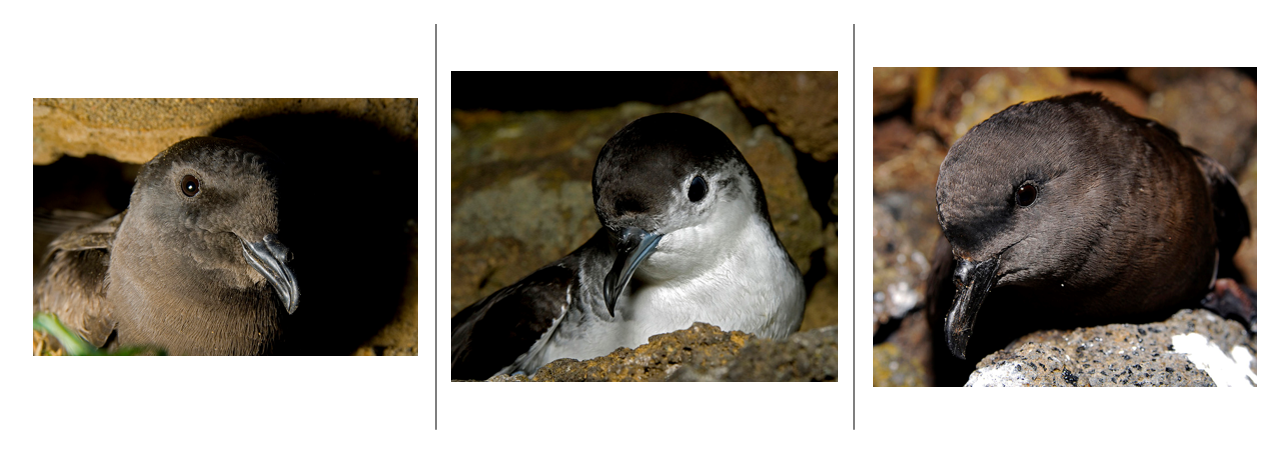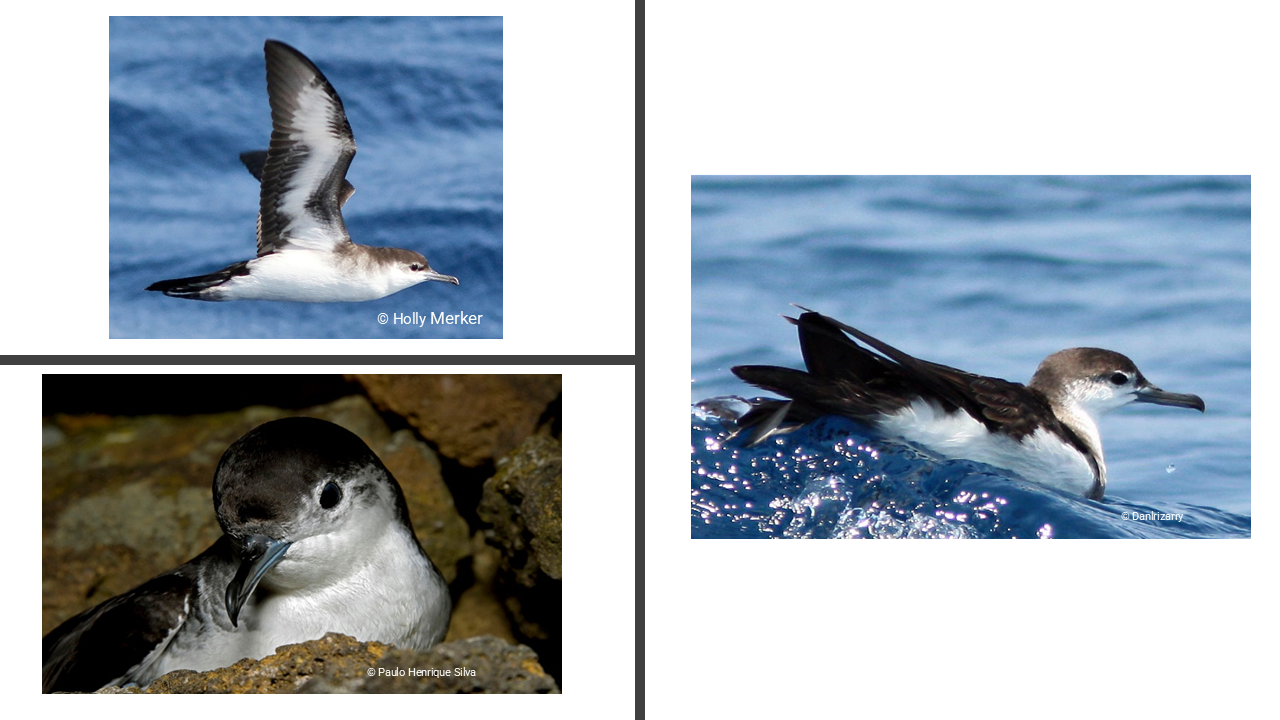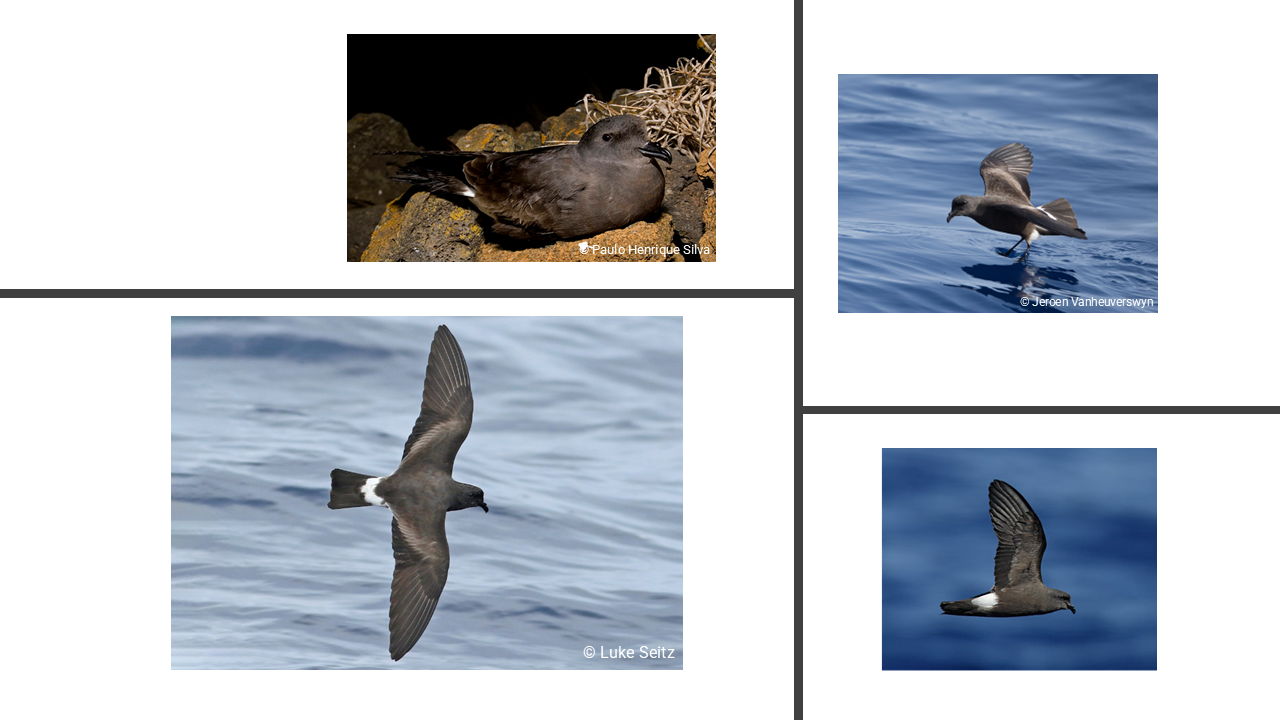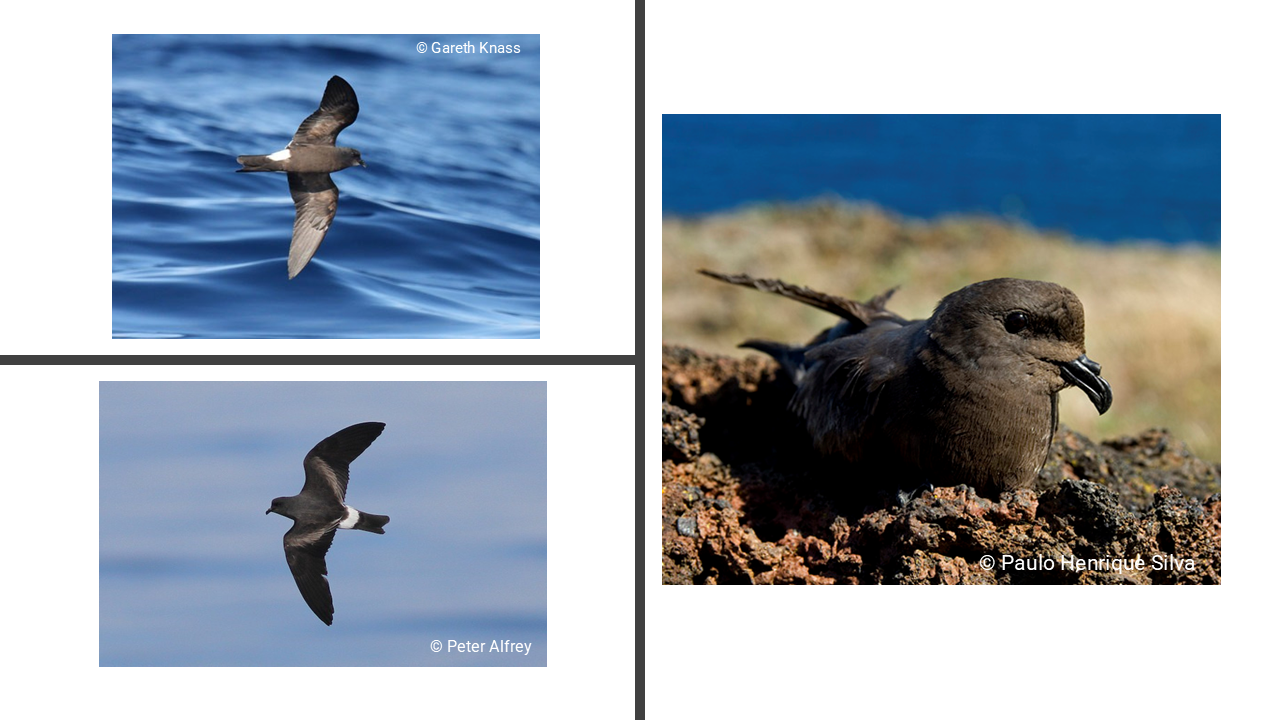

Targets species - Seabirds affected by light pollution in Azores
Targets species - Seabirds affected by light pollution in Azores
10 species of seabirds nest in the Azores, 6 belonging to the order Procellariiformes and 4 belonging to the order Charadriiformes. The order Charadriiformes includes seabirds and birds from coastal and wetland environments, such as gulls and terns. On the other hand, birds belonging to the order Procellariiformes are known as pelagic birds. They inhabit the high seas and open oceans, spending most of their lives at sea and only coming ashore to breed. They are characterized by laying only one egg per season. These birds are essentially nocturnal on land and are those affected by light pollution.

Bulwer's petrel (Bulweria bulwerii)
Morphology: This seabird measures 26-27 cm and resembles a pigeon with almost uniformly brownish-black plumage.
Distribution: This species is distributed throughout the tropical Atlantic and Pacific oceans. In the Azores archipelago, this bird nests on the islands of Santa Maria and Graciosa in only 3 colonies.
Reproduction: It nests in shallow cavities between April and September*.
Diet: It feeds on small crustaceans and fish, mainly at night.
Interesting facts: It only vocalizes in the nest and is silent in flight.
Conservation: In the Azores archipelago, the bulwer’s petrel has an “Endangered” conservation status, as it is restricted to only 3 islets and is experiencing a decline in the quality and extent of its habitat.


Manx Shearwater (Puffinus puffinus)
Morpology: This marine species measures between 30 and 38 cm, has a thin, elongated beak, a black back, and a white belly.
Distribution: It breeds in the Atlantic and in the Azores archipelago, nesting on the islands of Corvo and Flores. It is distributed throughout the waters of Argentina and South Africa.
Reproduction: In the Azores archipelago, it breeds on coastal cliffs and islets, in natural or excavated holes in the ground, between February and July*.
Diet: It feeds on small squid and fish.
Interesting facts: This seabird has a very fast and strong wingbeat.
Conservation: In the Azores, the shearwater is classified as an “Endangered” species, as its population is very small. 12 colonies of this species have been recorded on the islands of Corvo and Flores, with an estimated breeding population of between 115 and 235 pairs.


Audubon's shearwater (Puffinus lherminieri)
Morpology: The Audubon’s shearwater is a small species, measuring between 25 and 30 cm, and its plumage is similar to the Manx shearwater; however, it can be distinguished by the white plumage around its eyes.
Distribution: It is found in temperate and tropical waters of the North Atlantic and breeds across various European and American archipelagos. In the Azores archipelago, it breeds on most islets.
Reproduction: It nests in rock crevices or burrows along coastal areas and islets that are generally inaccessible, between mid-January and June*.
Diet: It feeds on small squid and fish during the day and at night.
Interesting facts: To search for its prey, this species frequently dives within the first 15 meters of the water column.
Conservation: In the Azores and Madeira archipelagos, this species is classified as “Vulnerable” due to its small population.


Band-rumped Storm-petrel (Hydrobates castro)
Morpology: The Band-rumped Storm-petrel is a small species measuring between 19 and 21 cm with black plumage.
Distribution: The Band-rumped Storm-peterl is widely distributed across the Pacific and Atlantic oceans. During the nesting season, its distribution area in Portugal includes the Azores, Madeira, Berlengas, and Selvagens archipelagos.
Reproduction: It is a species that nests in deep rock crevices or holes between September and February.
Diet: It feeds on small crustaceans, fish, pieces of fat, and the remains of other predators.
Interesting facts: This seabird became known to fishermen as the “whale blackbird” because it consumes the remains of hunted whales.
Conservation: Although globally the Madeira storm petrel has a conservation status of least concern, in Portugal it has a “Vulnerable” status because it is a colonial species with a small population.


Monteiro's storm petrel (Hydrobates monteroi)
Morpology: It is the smallest seabird in the Azores, measuring between 18 and 20 cm and has dark brown plumage. This species has a slight fork in its tail.
Distribution: This species is only found in the Azores archipelago and nowhere else in the world. It nests on the islets of Graciosa Island.
Reproduction: It nests in crevices in rocks or in small, usually flat and shallow cavities between March-April and September-October*.
Diet: Its diet consists of small fish, crustaceans, and cephalopods (e.g., squid).
Interesting facts: The Azores storm petrel is very similar to the Madeira storm petrel, but was recently considered a new species, distinct from the Madeira storm petrel.
Conservation: The conservation status of this species is “Vulnerable” due to its restricted distribution area and small population size.

